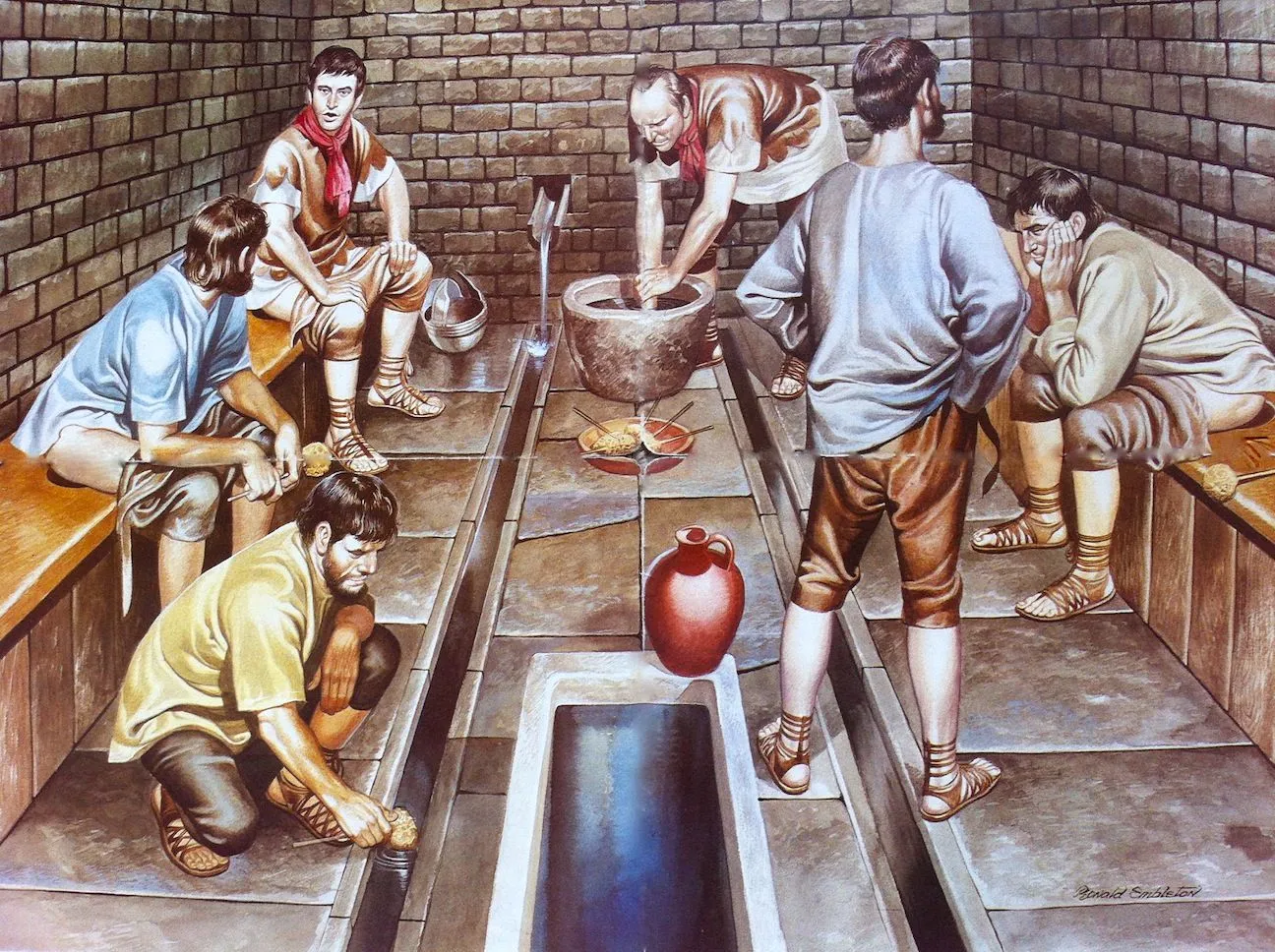this post was submitted on 30 Jul 2024
122 points (100.0% liked)
Illustrations of history
628 readers
141 users here now
This magazine is for sharing artwork of historical events, places, personages, etc. Scale models and the like also welcome!
Generally speaking, actual photos of a historical item should go to !historyartifacts@lemmy.world
Photos of ruins should go to !historyruins@lemmy.world
Photos of the past should go to !HistoryPorn@lemmy.world
founded 4 months ago
MODERATORS
you are viewing a single comment's thread
view the rest of the comments
view the rest of the comments

You see these sticks with a sponge they are holding or dunkin' in on the left side?
Instead of toilet paper, you may have used a sponge (Latin: tersorium) to wipe. These ancient devices consisted of a stick with a vinegar- or salt water-soaked sponge attached.
They were often shared!
I wonder how/if they didn't get sick from sharing the poop stick.
Parasite loads found in the end-location of Roman latrines are often... significant.
There's ongoing debate as to whether Roman urban hygeine was better, worse, or net neutral compared to rural (including rural 'barbarian') practices. About the only thing that's agreed is that it was better than non-Roman urban hygeine, which often made sharing a poop stick seem positively sanitiary.
Though, as noted, they were rinsed with water and soaked in either salt water or vinegar (which the Romans knew 'cleaned' better, though they didn't have a strong conception of bacteria or microscopic parasites)
I wonder how historians find out about this. Do we entirely rely on surviving written records? Or is there any other way to know what a seeningly poop stick was and how hygienic latrines were?
There are various written sources, including graffiti and poetry, for the use of the tersorium (poop stick), including one mosaic in an ancient latrine reminding users to "Make use of the tersorium" before leaving.
As for finding out about hygiene, ancient poop, believe it or not, is often an important archeological find because of the details we can get from it. Ain't science grand? There are other matters too, of course - Romans wrote effusively on their bathhouses, many of which survive to this day, as well as poetry admonishing men to groom themselves properly, physician's manuals, finding nit combs, etc etc.
Thank you! History and archeology really are fascinating